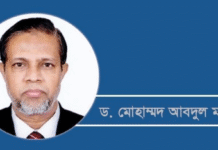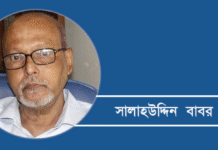Jennifer Howe

Portrait of Raja Ram Roy, son of Raja Ram Mohan Roy, 1833.
Painted by John King (1788-1837) at Bristol, in 1833.
British Library Reference: F599
Size: 91.5 by 71 cm.
This portrait is of Raja Ram Roy, the first non-European to be employed within the British Civil Service. When he arrived in Europe in 1831, it was never his intention to work in London. However, circumstances altered the fortunes of this privileged young Bengali man. From 1835 to 1838 he worked in the Board of Control, a government office which was set up to regulate the East India Company’s activities.
He came to Europe as a companion to his father, Ram Mohan Roy (the famous Bengali social reformer), who was touring Europe as an envoy of the Mughal King of Delhi. On September 27, 1833 Ram Mohan Roy died just outside of Bristol. It appears that Raja Ram Roy received an allowance of ‘Rs 3750 per month’ from the King of Delhi following his father’s death. However it is hard to say how long these payments continued. (IOR/E/4/781, p.511-551). Whatever his circumstances, Raja Ram Roy remained in England for another 5 years before returning to India.
In August 1835, almost 2 years after his father’s death, Raja Ram Roy was appointed ‘for one year as an extra Clerk at the Board of Control at East India House with a salary of £100, to be charged among the contingencies of the office’. The Board of Control was a government office that was set up in 1784 to regulate the East India Company’s activities. One area the Board of Control regulated was the King of Delhi’s expenses. It is impossible to say what motivated Raja Ram Roy to take up the post he was offered with the Board of Control, but it could well be that he was forced to take work with the very branch of government that had indirectly cut his allowance.
Raja Ram Roy’s employment at the Board of Control was controversial at the time because he was not European. However, in parliament, both Whigs and Liberals supported his employment, which was seen as a learning opportunity for the young man, who could return to India and disseminate new insight into the running of public business to his Indian peers (Ballhatchet 1957).
In February 1838 Raja Ram Roy ‘expressed a wish to return to India’. He was paid up to 4 August, 1838, and according to the Board of Control’s minutes, was given a ‘Donation of £100 in consideration of his diligence in the discharge of his duties, and the circumstances under which he accompanied his Father Ram Mohun Roy to this country’(IOR/F/1/6, p.460-462, 512-513) . By 1840 he was back in India, but it appears that he died soon after his return.
Bibliography:
Archer, Mildred. India and British Portraiture, 1770-1825. London: Sotheby Parke Bernet, 1979.
Archer, Mildred. The India Office Collection of Paintings and Sculpture. London: British Library, 1986.
Ballhatchet, K.A. ‘Raja Ram Roy’s Visit to England.’ Bulletin of the School of Oriental and African Studies. Volume 20, No.1/3, 1957, pp.69-71.
Bayly, C.A. (editor) The Raj: India and The British, 1600-1947. London: National Portrait Gallery Publications, 1990.









